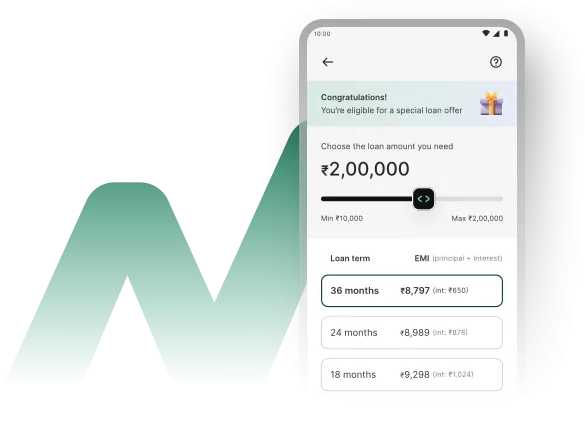Insert here your custom code
RBI Makes Floating Loan Rates More Transparent for Borrowers

If you’ve ever taken a home loan or personal loan, you’ve probably heard the term “floating interest rate.” It’s one of the most popular options because it moves with market trends — meaning when lending rates drop, your EMIs can too. But for many borrowers, understanding how and when these rates change has always been confusing. To make things clearer and fairer for borrowers, the Reserve Bank of India (RBI) has introduced new rules to bring greater transparency to floating loan rates. These changes are designed to help borrowers understand their loans better, switch lenders easily if they want, and avoid being stuck with unfair rate hikes. Let’s explore what this means for you, how it benefits borrowers, and what steps you can take to make the most of these new guidelines. What Are Floating Interest Rates? Before we talk about the new rules, let’s understand what floating interest rates actually are. A floating rate loan is one where the interest rate changes based on a benchmark or reference rate — like the Repo Rate set by the RBI. This means your loan interest rate (and your EMI) can increase or decrease depending on the central bank’s monetary policies or market conditions. For example: If your home loan is linked to the Repo Rate, and the RBI cuts this rate, your loan interest might drop, reducing your EMI. Similarly, if the Repo Rate rises, your EMI could increase. This flexibility makes floating loans popular among borrowers who believe interest rates will remain stable or fall over time. Why RBI Stepped In While floating loans sound great in theory, in practice, many borrowers were not getting the full benefit of falling interest rates. Here’s why: - Some banks were slow to pass on the benefit of rate cuts to existing borrowers. - The calculation of floating rates was not always transparent. - Borrowers found it difficult or costly to switch to another bank or to a different interest type (like fixed-rate loans). The RBI noticed these issues and decided to make the system more transparent, borrower-friendly, and competitive. What Are the New RBI Rules for Floating Rate Loans? The RBI’s revised guidelines, effective from October 2024, focus on transparency and fairness. Here are the key points: 1. Clear Communication on Benchmark and Spread - Banks and financial institutions must now clearly inform borrowers about: - The benchmark rate (like Repo Rate, Treasury Bill Rate, etc.) - The spread applied by the bank (the extra percentage added to the benchmark) - Any changes in the rate, along with reasons for the change. This ensures borrowers know exactly how their interest rate is being calculated and can easily compare it with other lenders. 2. Easy Switching Without Heavy Penalties One of the biggest borrower concerns has been switching difficulties. Many people felt stuck with their existing lender because switching to another bank meant high charges or hidden fees. Under the new rules: - Banks cannot impose unreasonable charges for switching loans. - Borrowers can move to another lender or fixed-rate loan with minimal costs. - The entire switching process must be simple and transparent, with all details shared upfront. This gives borrowers the freedom to choose better interest rate options without feeling trapped. 3. Mandatory Communication Before Rate Changes Lenders must now inform borrowers in advance before revising the floating rate. This means you’ll know beforehand when your EMI is about to change and can plan your finances accordingly. Earlier, borrowers often discovered changes only when their EMI increased — which created confusion and frustration. 4. Simplified Rate Reset Process Banks must now follow a standardized reset schedule, meaning your loan’s interest rate will be reviewed and adjusted at fixed intervals (e.g., every 3 months or 6 months). This eliminates guesswork and helps borrowers track when their next rate change will happen. 5. Transparency in Loan Agreements All new loan documents must clearly mention: - The benchmark rate used - The reset frequency - The spread or margin - The conditions for switching This ensures you know what you’re signing up for from day one.

Strategies to Reduce FOIR How Borrowers Will Benefit The new RBI rules are a big win for borrowers, especially those with long-term loans like home or education loans. Here’s how you’ll benefit: More Clarity No more confusion about how your interest rate is calculated. Every rate change will be clearly linked to a benchmark and communicated to you. Fair Rate Benefits If the RBI lowers the repo rate, your lender will now be required to reflect this change in your loan rate more quickly and fairly. Freedom to Switch You can now easily switch to another lender offering a better rate — without paying hefty penalties or facing hidden charges. Better Financial Planning With advance notices and predictable reset schedules, you can plan your budget more effectively, knowing when your EMI may change. Increased Competition As switching becomes easier, banks and NBFCs will be motivated to offer better interest rates and customer service to retain borrowers. How to Make the Most of These New Rules Now that the RBI has made floating rates more transparent, here are some steps you can take to get the best out of your loan: 1. Stay Informed About Benchmark Rates Keep an eye on the RBI’s monetary policy updates. When repo rates fall, check whether your lender has passed on the benefit to you. If not, ask for a rate review or consider switching. 2. Compare Lenders Regularly With easier switching, don’t hesitate to compare loan offers from different banks or NBFCs. Even a small difference in interest rate (say 0.25%) can save you thousands over time. 3. Read the Fine Print Always review your loan agreement carefully. Make sure you understand the benchmark, spread, and reset frequency. If anything seems unclear, ask your loan consultant or bank representative to explain. 4. Use Loan Portability Wisely If your lender’s rate is higher than the market average, you can now transfer your loan to another lender offering a lower rate. However, calculate the total cost before switching — including processing fees and documentation charges. 5. Seek Expert Guidance If comparing lenders or understanding terms feels overwhelming, consider consulting a loan expert or financial advisor. They can help you choose the most cost-effective option and handle the paperwork smoothly. What This Means for India’s Borrowing Future The RBI’s move is a major step toward a more transparent, borrower-friendly lending ecosystem. It will not only make it easier for people to understand their loans but also push lenders to operate with greater accountability. In the long run, this could help: - Improve trust between borrowers and lenders - Increase competition in the loan market - Ensure faster rate transmission from the RBI to the end customer For borrowers, it means more control, better choices, and peace of mind knowing that the system is working in their favor. Final Thoughts The RBI’s new rules for floating interest rates mark a positive change in India’s financial landscape. For too long, borrowers have struggled with unclear rate calculations and limited flexibility. Now, with greater transparency and easier switching options, managing loans has become simpler and fairer. If you already have a floating-rate loan, this is a great time to review your terms, check if your rate is competitive, and explore better options if needed. And if you’re planning to take a new loan, make sure you understand how the rate is linked to the benchmark — it could make a big difference in your long-term savings.

Empowering your financial journey with seamless Self-Apply Loan Options and dedicated Loan Agent Assistance, all integrated into smart, value-packed Subscription Plans.
Experience transparency, speed, and personalized support—only at Consult.Fundcera.com
GST : 24AAGCF2801F1Z6
CIN : U66190GJ2025PTC159913
Ready To Apply?
We make finance possible in just 3 simple steps to provide a fast, flexible and friendly customer experience
@copyright 2025 Fundcera | Privacy Policy
.webp)
.webp)
.webp)
.webp)
